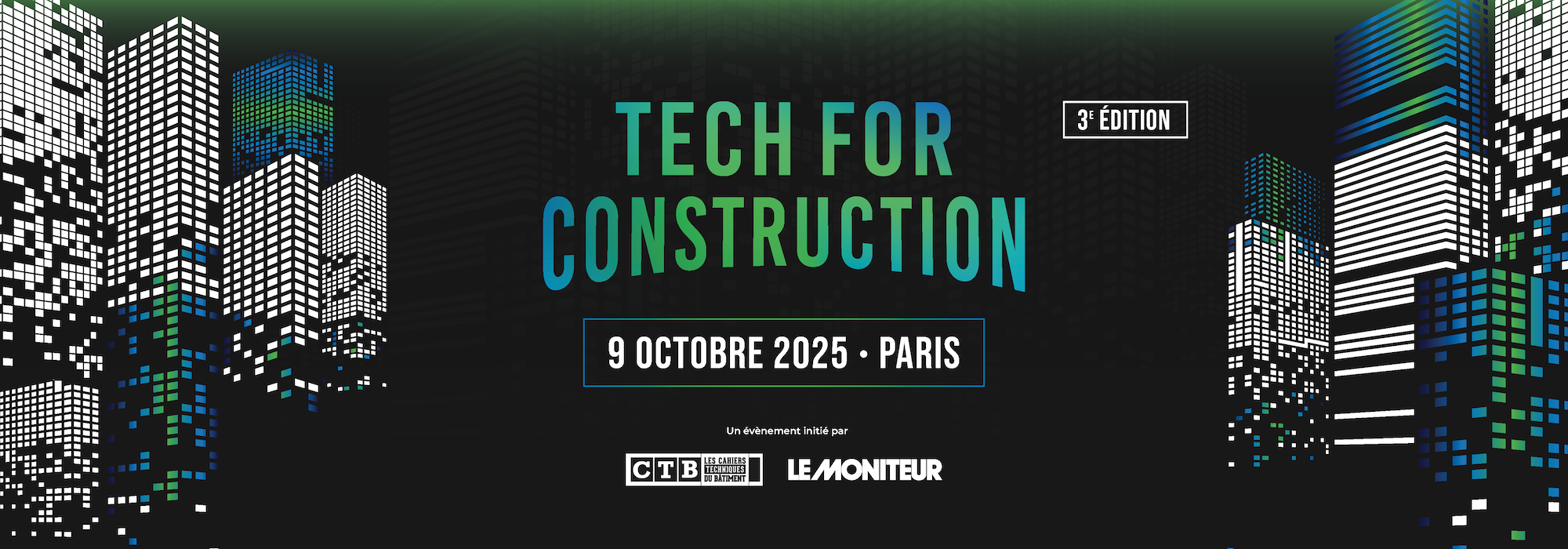Introduction
Project ownership: why mandating your document management system is your best ten-year liability protection

This article is based on a joint interview with Hugues Ouchala, former site engineer with 12 years of experience in construction project management and now Business Developer at Cooperlink Construction Hub, and Pierre Marcotte, property developer, entrepreneur, and business angel. Both observe that the responsibilities of project owners have increased significantly: growing technical complexity, stricter regulatory requirements, a rising number of stakeholders, tighter deadlines, and higher expectations regarding final quality.
In this context, the difficulties encountered on construction sites often stem from a common source: a missing document, an unclear validation, or an opinion that was never formally recorded. These gaps can slow down or block a project and may resurface years after delivery, during the ten-year liability period, when responsibilities overlap between project owners, designers, contractors, and insurers.

Faced with these situations, Pierre Marcotte recalls that project ownership fundamentally relies on a simple yet demanding triptych: quality, timeline, and cost.
As he puts it:
“The project owner is the guarantor of a completed project, of meeting deadlines, and of controlling costs. It is the very heart of the development process.”
Throughout this discussion, the two experts shed light on several key points:
• the project owner's responsibilities under the ten-year liability regime,
• high-risk situations that weaken projects,
• red lines that must not be crossed to remain covered,
• the importance of coherent and enforceable document traceability,
• and best practices to secure the decision-making process throughout the entire project lifecycle.
This perspective shows that beyond execution, evidence has now become an essential tool for project owners to manage and protect their projects.
Nota bene:Since P. Marcotte operates on the French market, the vocabulary used is specific to France.
Project ownership and property development: two roles often confused
The project owner (MOA) defines the need, sets the budget, timeline, and quality expectations. They organise decisions and consult subject-matter experts (architects, engineers, technical controllers) to validate solutions. They do not prescribe, they arbitrate.
The property developer, on the other hand, carries the financial risk. Depending on the project, they may also assume the role of project owner or delegate it. This distinction is fundamental, as it determines obligations, the nature of decisions, and how insurers assess responsibilities.
A sound project relies on a clear framework: everyone remains within their role, and every action is documented.
Understanding ten-year liability
The ten-year warranty covers serious defects that may compromise the structural integrity of a building or render it unfit for its intended use. For this warranty to apply, two conditions must be met: all stakeholders must be insured for their scope of work, and decisions must have been made in compliance with contractual and technical requirements.
In the event of a defect, the expert will seek to determine who made the decision, when, and on what basis. The ability to reconstruct the decision chain then becomes decisive.An oral opinion, an email that cannot be found, or an unversioned drawing is enough to weaken coverage. Conversely, clear and structured documentation protects all parties involved, including the project owner.
The red lines that must not be crossed
Some situations immediately create a risk for insurance coverage.The first is technical interference by the project owner: as soon as they validate or impose a technical solution, they step outside their role and may jeopardise the ten-year warranty.
The second concerns innovation: the use of emerging materials or experimental processes must be carefully framed. An ATEx (“An ATEx is a voluntary process consisting of a technical assessment issued by a panel of experts on any innovative construction technique or original architectural concept”, source cstb.fr), for example, is only an opinion; it does not replace a full technical validation or rigorous execution.
Late buyer-induced modifications (TMA) are another sensitive point, particularly in a VEFA (sale prior to completion). They can alter essential elements of the project and create inconsistencies if plan versions and decisions are not properly tracked.Finally, matters relating to the safety of individuals may fall under criminal liability: in such cases, only formal evidence is admissible.
High-risk situations: lessons from the field
Certain scenarios appear repeatedly in ten-year liability investigations.
Site suspensions, especially when a contractor is replaced, create a loss of project memory: scattered validations, incomplete records, unclear responsibilities. These are red flags for insurers.
Poorly controlled innovations are another source of vulnerability: a non-traditional technique requires a strictly defined scope, thorough supervision, and flawless documentation.
Common defects, such as cracking, illustrate how diverse the causes can be: structure, hygrothermal behaviour, workmanship, material compatibility. Without a precise record of technical decisions, the investigation quickly becomes complex.
Late buyer-requested modifications (TMA) also generate frequent disputes when they affect sensitive technical elements or when they are not properly recorded.In all these cases, one conclusion stands out: the risk arises less from the technical issue than from the absence of evidence.
The decision chain as a strategic asset
In a construction project, the quality of the outcome depends as much on technical choices as on the decision-making process that governs them. Good coordination is not measured solely by how smoothly the site operates, but by the ability to demonstrate, afterwards, that each decision was made at the right time, by the right person, and with the right information.
The decision chain relies on three pillars:
- Clear roles: who decides, who signs off, who is consulted.
- Formalised opinions: written documents, approvals, reports and technical notes.
- Controlled timelines: experts must have the time needed to provide a high-quality opinion.
When these elements are structured, the project gains strength. In the event of a dispute, this chain becomes an asset: it demonstrates the coherence of decisions, the competence of stakeholders, and the rigour of the project owner. Conversely, a vague chain creates room for interpretation, weakens responsibilities, and complicates the activation of warranties.
BIM, information and documentation: what really provides protection
BIM has established itself as a powerful tool for coordinating stakeholders around a digital representation of the project. But when it comes to risk management, 3D modelling alone is not enough.What truly provides protection is not the model itself, but the alignment between BIM data and the project’s official documentation.In practice, many disputes arise from a gap between:
-the decision that was actually approved,
- the version of the document in circulation,
- the way each stakeholder interprets it.
A single, coherent and shared document chain, whether digital or not, is more decisive than any isolated tool. BIM then becomes a lever, provided it is linked to a rigorous documentation discipline: clear versioning, explicit statuses, and recorded, accessible opinions.
Best practices to secure the entire ten-year liability cycle
Some simple practices significantly reduce risks for the project owner and their partners. Among the most essential:
- Staying strictly within one’s role: organising, deciding, but never prescribing technical solutions.
- Formalising all important technical opinions: no verbal agreements, no implicit approvals.
- Systematically versioning drawings, notes, approvals and meeting minutes.
- Framing innovations by clearly documenting their scope and conditions of use.
- Managing buyer-requested modifications (TMA) with rigour, especially when they arise late.
- Suspending works when necessary: it is better to pause a site than to validate an uncertain point.
- Documenting every arbitration: even seemingly minor decisions can have an impact.
Adopting these reflexes does not aim to burden projects, but to prevent grey areas that, years later, may escalate into complex disputes.
Conclusion: a responsibility that requires rigour and clarity
Project ownership now operates in an environment where projects are more technical, obligations more stringent, and responsibilities broader. In this context, the key is not only to execute correctly, but to be able to demonstrate, unambiguously, how decisions were made.
Traceability therefore becomes a true management tool. It protects against disputes, strengthens project quality, and secures the activation of ten-year guarantees. It is an invisible yet decisive investment that determines the robustness of the project well beyond delivery.In this logic, certain tools can support the project owner by structuring the decision chain. Cooperlink Construction Hub is one of these solutions, designed to address real on-the-ground challenges.
The platform makes it possible to:
- centralise all project documentation, ensuring that a single version is authoritative;
- record all approvals through explicit, time-stamped validation workflows;
- document each stakeholder’s role, based on responsibility matrices aligned with industry practices;
- preserve the project’s history, enabling the reconstruction of decision contexts even years after delivery;
- safeguard data sovereignty by allowing the platform to be hosted within the project owner’s own environment.
Cooperlink does not replace subject-matter experts or the technical requirements of the project. But it provides the documentary framework that is often missing to secure the entire decision-making cycle. In an environment where proof determines coverage, this structure becomes a genuine lever for managing risk.
What is your project?
Talk to an expert
Tell us more about your project and needs. Our experts will answer your questions within 24 hours.
.jpg)
Hugues Ouchala
Business developper










